Search Result
Results for "
Stearate
" in MedChemExpress (MCE) Product Catalog:
15
Biochemical Assay Reagents
9
Isotope-Labeled Compounds
| Cat. No. |
Product Name |
Target |
Research Areas |
Chemical Structure |
-
- HY-W099570
-
|
|
Biochemical Assay Reagents
|
Others
|
|
Sodium stearate is a biochemical reagent that can be used as a biological material or organic compound for life science related research.
|
-
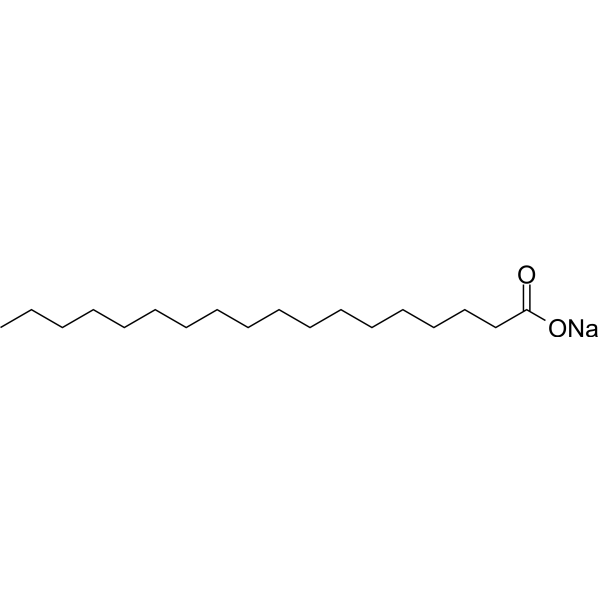
-
- HY-W099570S
-
-
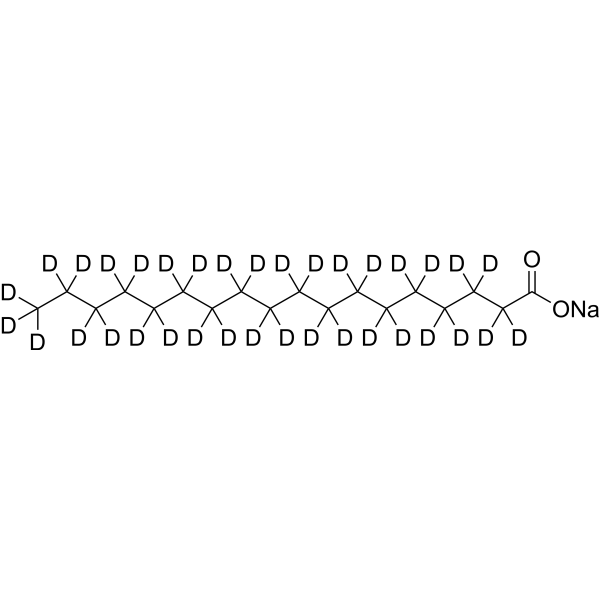
-
- HY-W133986S
-
-
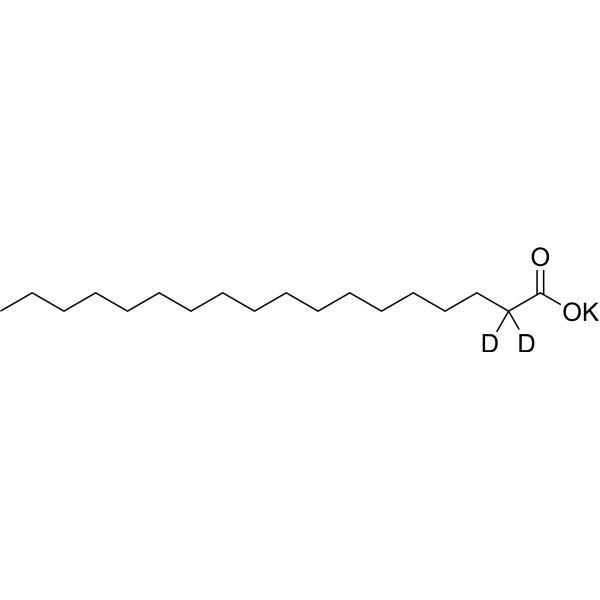
-
- HY-W133986S1
-
-
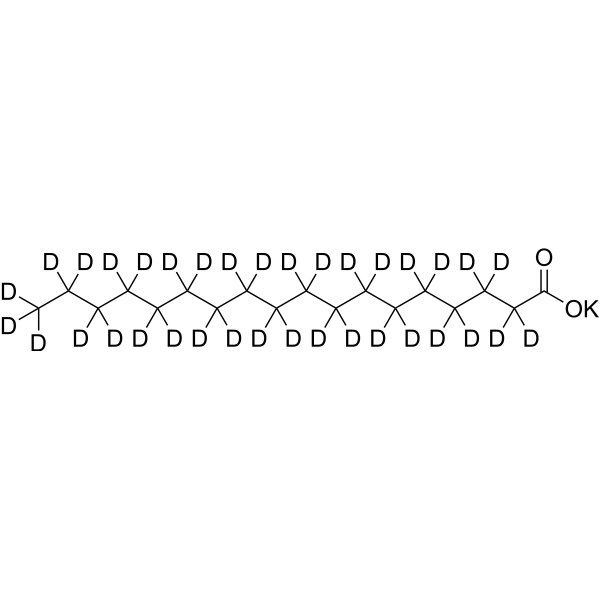
-
- HY-W010695S
-
-
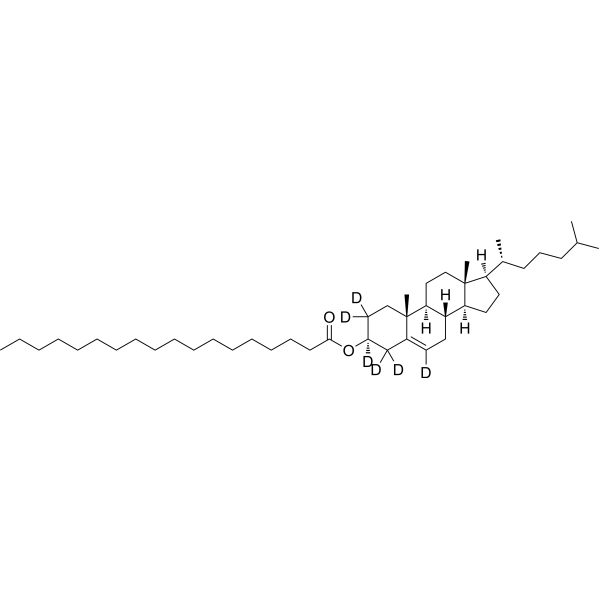
-
- HY-W013809S
-
-
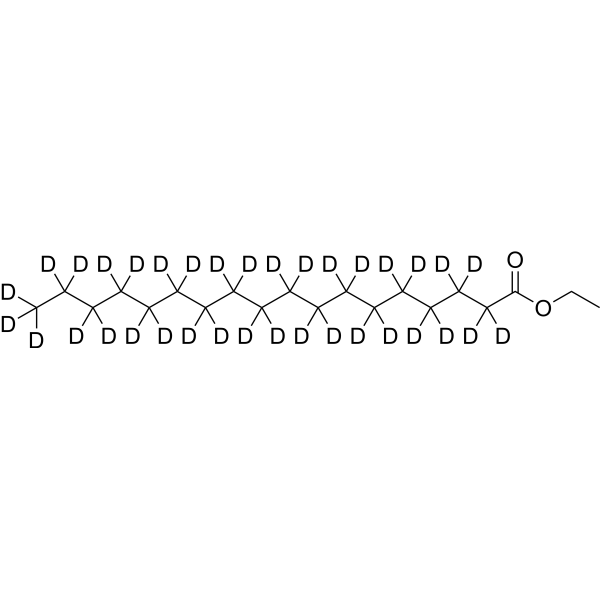
-
- HY-B1934S1
-
|
|
Isotope-Labeled Compounds
|
|
|
Methyl stearate-d35 is the deuterium labeled Methyl stearate. Methyl stearate, isolated from Rheum palmatum L. is a compopent of of soybean and rapeseed biodiesels[1].
|
-

-
- HY-W011188S
-
|
|
Isotope-Labeled Compounds
|
Others
|
|
Glycidyl stearate-d5 is a deuterium labeled Glycidyl stearate (HY-W011188). Oxiran-2-ylmethyl stearate is a compound belonging to the class of esters. It contains reactive oxirane or epoxy groups that give the molecule its unique properties. Oxiran-2-ylmethyl stearate is derived from stearic acid and epichlorohydrin, which are naturally occurring substances. Glycidyl stearate is commonly used in various industrial applications such as the production of coatings, adhesives and surfactants. It can also be used as a crosslinking agent in the manufacture of polymers and resins.
|
-
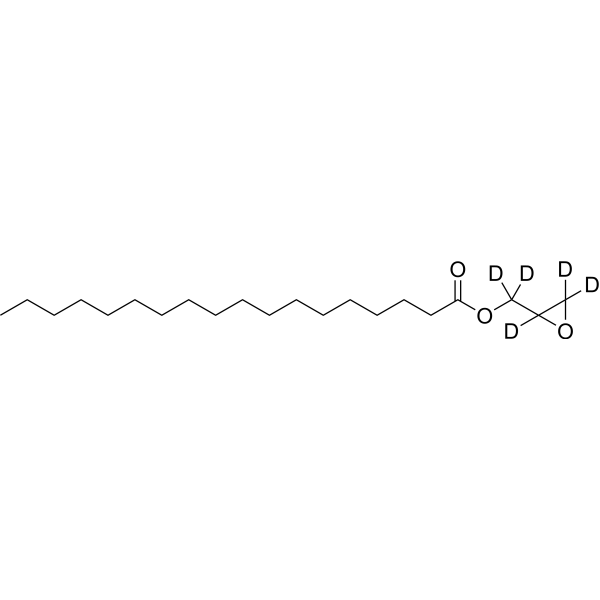
-
- HY-108875
-
|
|
Antibiotic
Bacterial
DNA/RNA Synthesis
|
Infection
Cancer
|
|
Erythromycin stearate is a macrolide antibiotic produced by actinomycete Streptomyces erythreus with a broad spectrum of antimicrobial activity. Erythromycin stearate binds to bacterial 50S ribosomal subunits and inhibits RNA-dependent protein synthesis by blockage of transpeptidation and/or translocation reactions, without affecting synthesis of nucleic acid [1][2]. Erythromycin stearate also exhibits antitumor and neuroprotective effect in different fields of research [3][4].
|
-
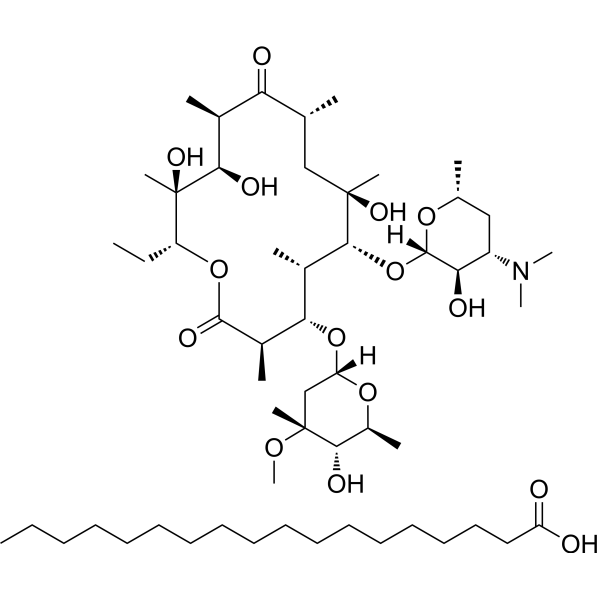
-
- HY-B1934R
-
|
Stearic acid methyl ester (Standard)
|
Others
|
Others
|
|
Methyl stearate (Standard) is the analytical standard of Methyl stearate. This product is intended for research and analytical applications. Methyl stearate, isolated from Rheum palmatum L. is a compopent of of soybean and rapeseed biodiesels .
|
-
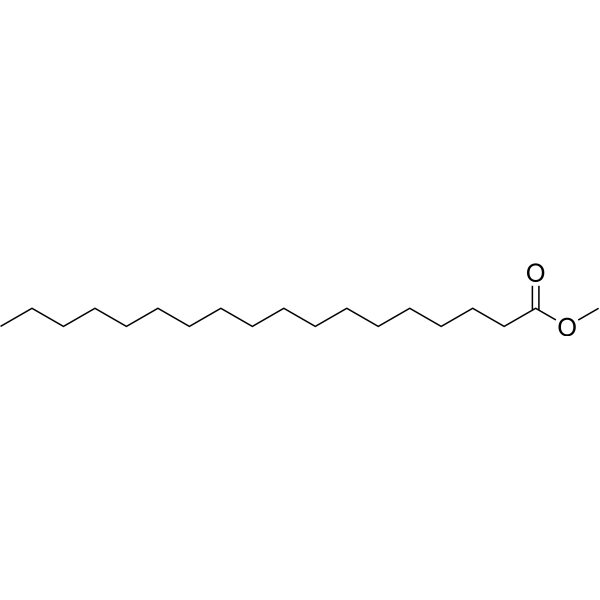
-
- HY-101530
-
-

-
- HY-W010695
-
|
|
Biochemical Assay Reagents
|
Others
|
|
Cholesteryl stearate is a biochemical reagent that can be used as a biological material or organic compound for life science related research.
|
-
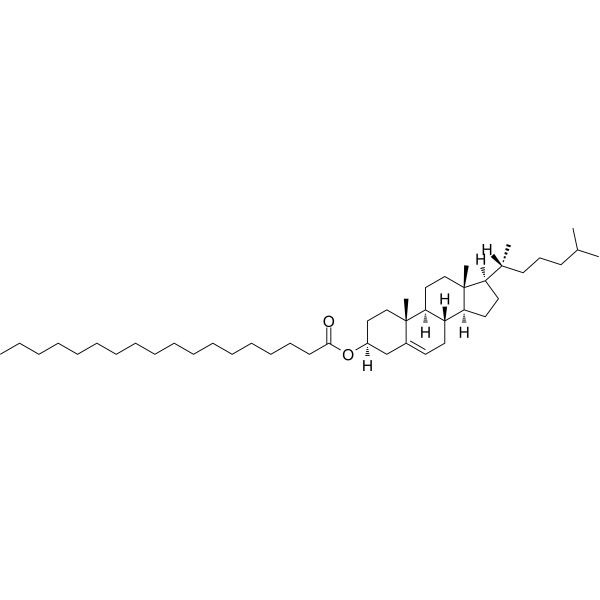
-
- HY-W127545
-
|
|
Biochemical Assay Reagents
|
Others
|
|
Phenyl Stearate is a biochemical reagent that can be used as a biological material or organic compound for life science related research.
|
-

-
- HY-B2219A
-
-
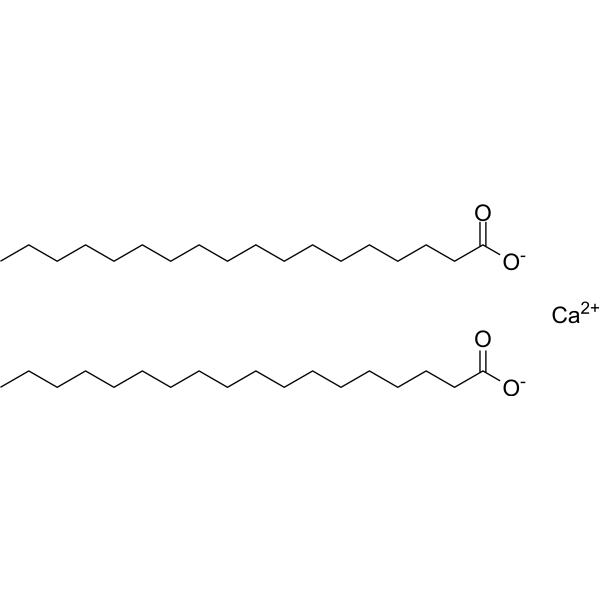
-
- HY-W011188
-
|
|
Biochemical Assay Reagents
|
Others
|
|
Oxiran-2-ylmethyl stearate is a biochemical reagent that can be used as a biological material or organic compound for life science related research.
|
-

-
- HY-B1934
-
|
Stearic acid methyl ester
|
|
|
|
Methyl stearate, isolated from Rheum palmatum L. is a compopent of of soybean and rapeseed biodiesels .
|
-
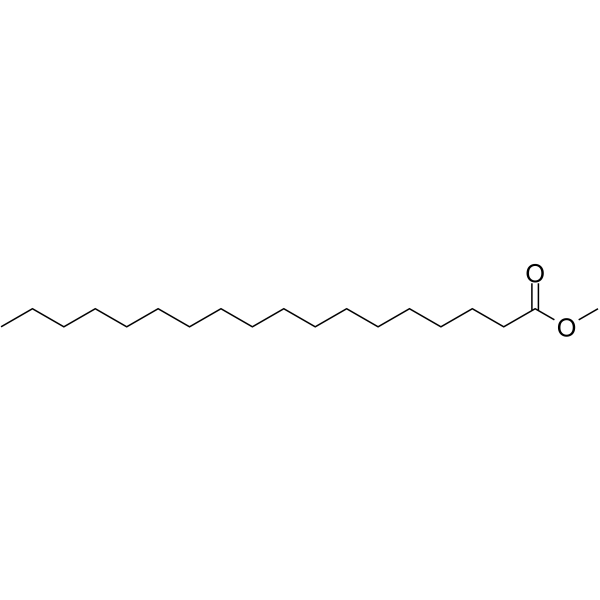
-
- HY-W127563
-
|
|
Biochemical Assay Reagents
|
Others
|
|
Tin(II) stearate is a biochemical reagent that can be used as a biological material or organic compound for life science related research.
|
-
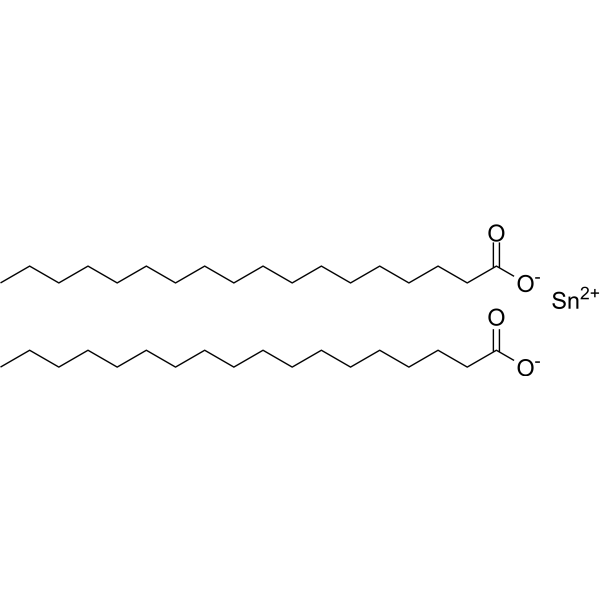
-
- HY-W127326
-
|
|
Biochemical Assay Reagents
|
Others
|
|
2-Nitrophenyl stearate is a biochemical reagent that can be used as a biological material or organic compound for life science related research.
|
-

-
- HY-W013809
-
|
Stearic acid ethyl ester
|
Biochemical Assay Reagents
|
Others
|
|
Ethyl stearate is a biochemical reagent that can be used as a biological material or organic compound for life science related research.
|
-
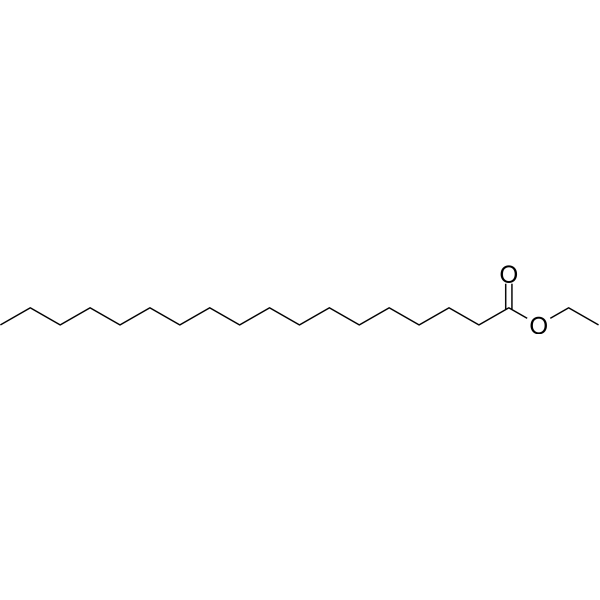
-
- HY-W127417
-
|
Stearic acid behenyl ester
|
Biochemical Assay Reagents
|
Others
|
|
Behenyl stearate is a biochemical reagent that can be used as a biological material or organic compound for life science related research.
|
-

-
- HY-W127503
-
|
Stearic Acid Lauryl Ester
|
Biochemical Assay Reagents
|
Others
|
|
Dodecyl Stearate is a biochemical reagent that can be used as a biological material or organic compound for life science related research.
|
-

-
- HY-Y1054
-
|
Stearic Acid Magnesium(II) Salt
|
|
|
|
Magnesium stearate is a commonly used pharmaceutical lubricant. But Magnesium stearate leads to an adverse effect on bonding between particles. Magnesium stearate can be used as an excipient, such as lubricant. Pharmaceutical excipients, or pharmaceutical auxiliaries, refer to other chemical substances used in the pharmaceutical process other than pharmaceutical ingredients. Pharmaceutical excipients generally refer to inactive ingredients in pharmaceutical preparations, which can improve the stability, solubility and processability of pharmaceutical preparations. Pharmaceutical excipients also affect the absorption, distribution, metabolism, and elimination (ADME) processes of co-administered drugs .
|
-
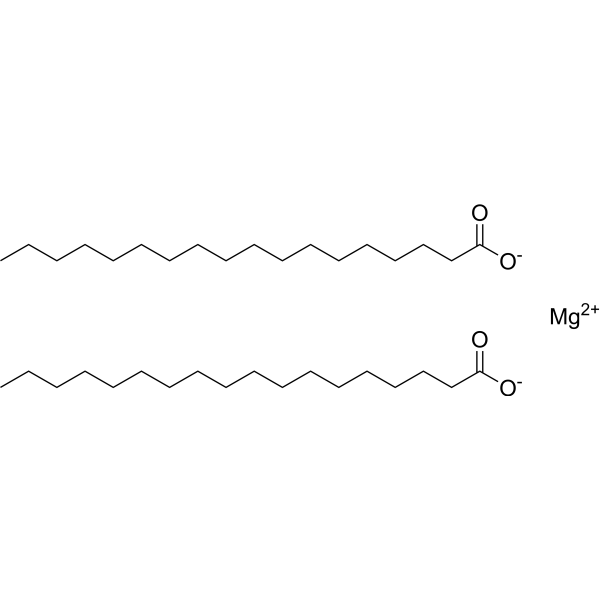
-
- HY-W127437
-
|
Octadecanoic acid, octadecyl ester
|
Biochemical Assay Reagents
|
Others
|
|
Stearyl Stearate is a biochemical reagent that can be used as a biological material or organic compound for life science related research.
|
-

-
- HY-W099563
-
|
|
Biochemical Assay Reagents
|
Others
|
|
4-Nitrophenyl stearate, which is an ester formed by the condensation of stearic acid and 4-nitrophenol, is commonly used as a substrate for enzymatic assays, where the hydrolysis of ester bonds by esterase and lipase can be measured by absorbance or ratio In addition, 4-Nitrophenyl stearate has been used as a model compound to study the enzymatic activity and selectivity of lipases and esterases from various sources. The long hydrophobic tail of the molecule makes it suitable for use in lipophilic Good solubility in the environment makes it a useful probe for studying lipid metabolism.
|
-
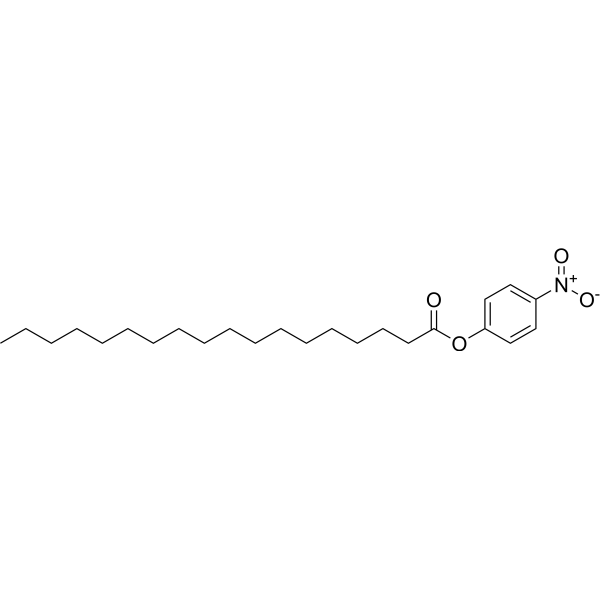
-
- HY-W099569
-
|
Zinc octadecanoate
|
Biochemical Assay Reagents
|
Others
|
|
Zinc stearate is a Zinc distearate. Zinc stearate can be used as an excipient, such as lubricants for tablets and capsules. Pharmaceutical excipients, or pharmaceutical auxiliaries, refer to other chemical substances used in the pharmaceutical process other than pharmaceutical ingredients. Pharmaceutical excipients generally refer to inactive ingredients in pharmaceutical preparations, which can improve the stability, solubility and processability of pharmaceutical preparations. Pharmaceutical excipients also affect the absorption, distribution, metabolism, and elimination (ADME) processes of co-administered drugs .
|
-
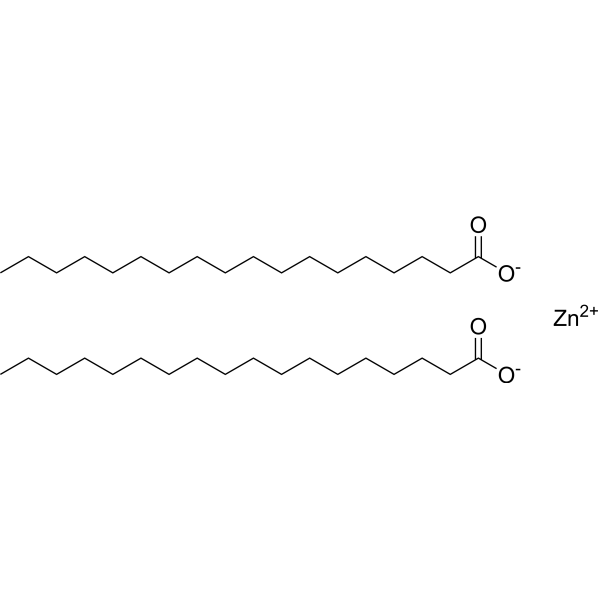
-
- HY-19288
-
|
ABT 606; MIV 606; A 174606.0
|
|
|
|
Valomaciclovir stearate (ABT 606), a nucleoside analog, is the Omaciclovir (HY-116174) prodrug. Valomaciclovir stearate has antiviral activity against HSV-1 and varicella zoster virus (VZV) .
|
-
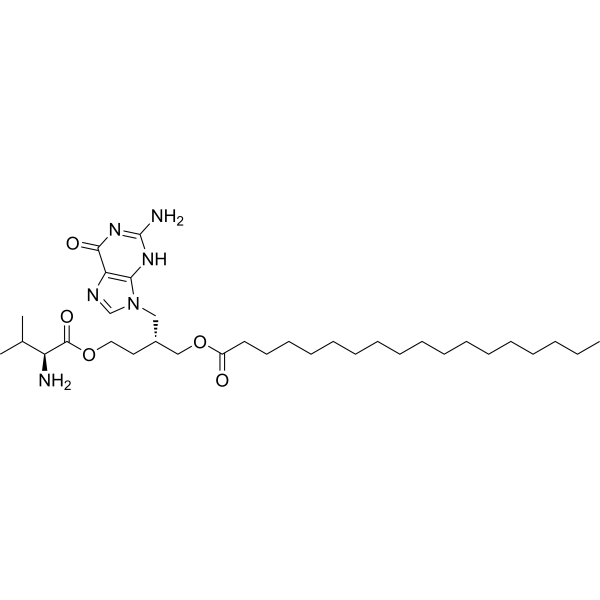
-
- HY-154637
-
|
|
Biochemical Assay Reagents
|
Others
|
|
Sucrose Stearate can be used as an excipient, such as Surfactants, emulsifiers, solubilizers, etc. Pharmaceutical excipients, or pharmaceutical auxiliaries, refer to other chemical substances used in the pharmaceutical process other than pharmaceutical ingredients. Pharmaceutical excipients generally refer to inactive ingredients in pharmaceutical preparations, which can improve the stability, solubility and processability of pharmaceutical preparations. Pharmaceutical excipients also affect the absorption, distribution, metabolism, and elimination (ADME) processes of co-administered drugs .
|
-
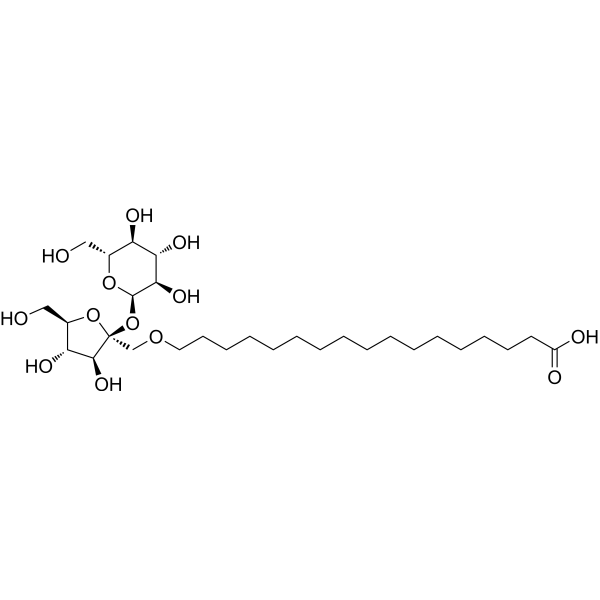
-
- HY-101530B
-
|
PEG 40 Stearate
|
Biochemical Assay Reagents
|
Others
|
|
Polyoxyl 40 stearate can be used as an excipient. Pharmaceutical excipients, or pharmaceutical auxiliaries, refer to other chemical substances used in the pharmaceutical process other than pharmaceutical ingredients. Pharmaceutical excipients generally refer to inactive ingredients in pharmaceutical preparations, which can improve the stability, solubility and processability of pharmaceutical preparations. Pharmaceutical excipients also affect the absorption, distribution, metabolism, and elimination (ADME) processes of co-administered drugs .
|
-
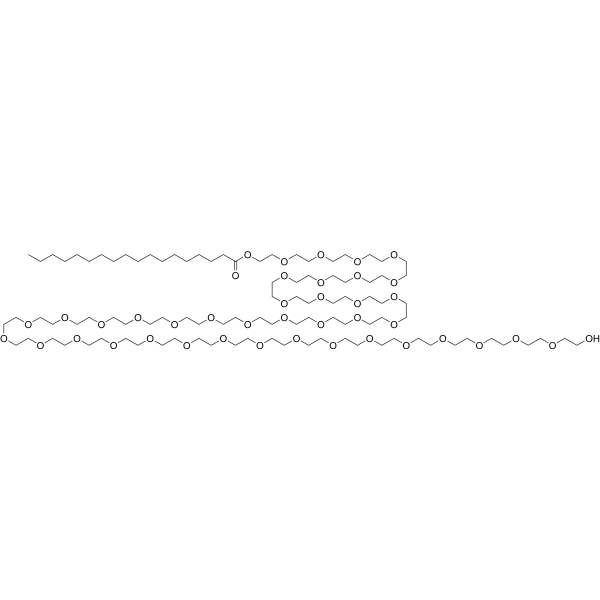
-
- HY-101530A
-
|
PEG 8 Stearate
|
Biochemical Assay Reagents
|
Others
|
|
Polyoxyl 8 stearate can be used as an excipient. Pharmaceutical excipients, or pharmaceutical auxiliaries, refer to other chemical substances used in the pharmaceutical process other than pharmaceutical ingredients. Pharmaceutical excipients generally refer to inactive ingredients in pharmaceutical preparations, which can improve the stability, solubility and processability of pharmaceutical preparations. Pharmaceutical excipients also affect the absorption, distribution, metabolism, and elimination (ADME) processes of co-administered drugs .
|
-

-
- HY-101530C
-
|
PEG 100 Stearate
|
Biochemical Assay Reagents
|
Others
|
|
Polyoxyl 100 stearate can be used as an excipient, such as o/w emulsifiers, solubilizers, ointment and suppository bases. Pharmaceutical excipients, or pharmaceutical auxiliaries, refer to other chemical substances used in the pharmaceutical process other than pharmaceutical ingredients. Pharmaceutical excipients generally refer to inactive ingredients in pharmaceutical preparations, which can improve the stability, solubility and processability of pharmaceutical preparations. Pharmaceutical excipients also affect the absorption, distribution, metabolism, and elimination (ADME) processes of co-administered drugs .
|
-
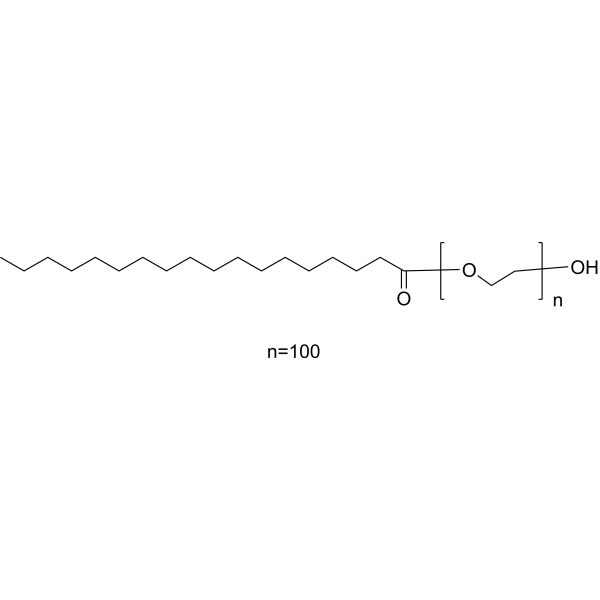
-
- HY-W127738
-
|
Vitamin C Stearate; Ascorbic acid 6-Stearate; Ascorbyl Stearate
|
Biochemical Assay Reagents
|
Others
|
|
6-O-Stearoyl-L-ascorbic Acid is a biochemical reagent that can be used as a biological material or organic compound for life science related research.
|
-
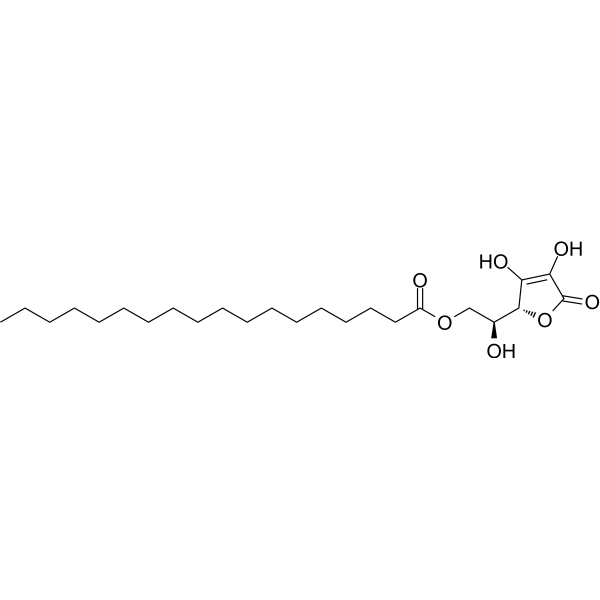
-
- HY-W106426
-
|
|
Biochemical Assay Reagents
|
Others
|
|
VinylStearate(stabilizedwithMEHQ) is a biochemical reagent that can be used as a biological material or organic compound for life science related research.
|
-
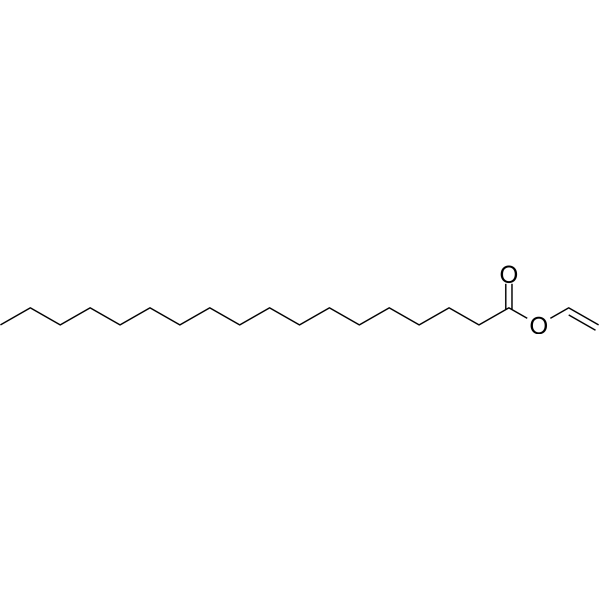
-
- HY-Y1893
-
-

-
- HY-113873
-
|
|
Others
|
Metabolic Disease
|
|
10-Thiastearic acid inhibits desaturation of? stearate to oleate. 10-Thiastearic acid has hypolipidemic effect .
|
-

-
- HY-W373206
-
|
|
Others
|
Metabolic Disease
|
|
Triampizine is an effective gastric antisecretory agent. Triampizine does not have the side effects commonly associated with anticholinergic agents. Triampizine may react with the excipient magnesium stearate. Triampizine can be used in the research of hyperacidity .
|
-
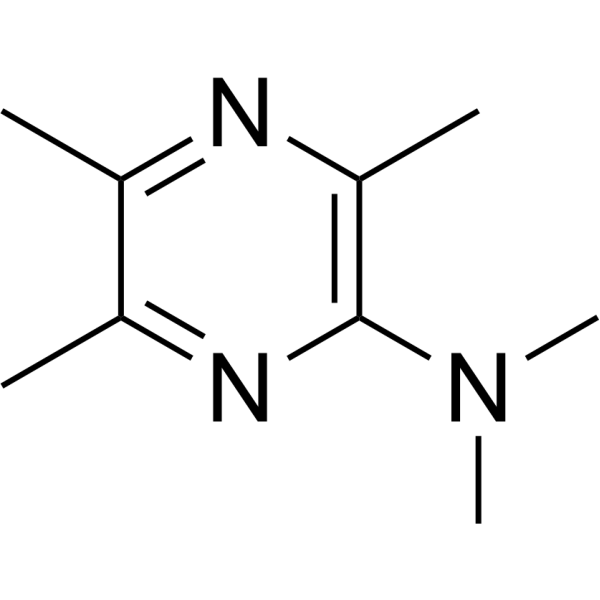
-
- HY-Y1039S
-
|
1-Monostearin-d40; 2,3-dihydroxypropyl Stearate-d40
|
Isotope-Labeled Compounds
|
Others
|
|
1-Stearoyl-rac-glycerol-d40 is the deuterium labeled 1-Stearoyl-rac-glycerol[1].
|
-
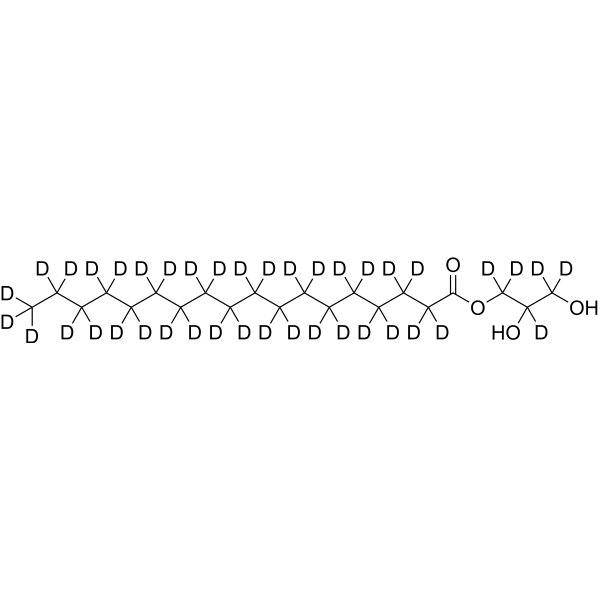
-
- HY-Y1039S1
-
|
1-Monostearin-d35; 2,3-dihydroxypropyl Stearate-d35
|
Isotope-Labeled Compounds
|
Others
|
|
1-Stearoyl-rac-glycerol-d35 is the deuterium labeled 1-Stearoyl-rac-glycerol.
|
-
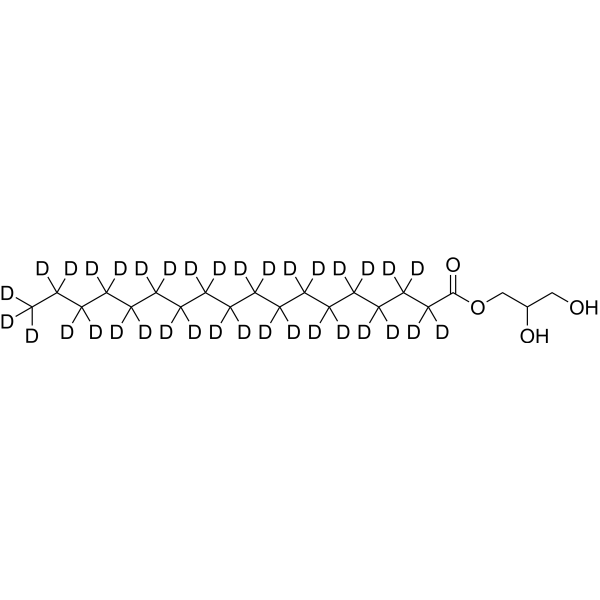
| Cat. No. |
Product Name |
Type |
-
- HY-W099570
-
|
|
Biochemical Assay Reagents
|
|
Sodium stearate is a biochemical reagent that can be used as a biological material or organic compound for life science related research.
|
-
- HY-W010695
-
|
|
Biochemical Assay Reagents
|
|
Cholesteryl stearate is a biochemical reagent that can be used as a biological material or organic compound for life science related research.
|
-
- HY-W127545
-
|
|
Biochemical Assay Reagents
|
|
Phenyl Stearate is a biochemical reagent that can be used as a biological material or organic compound for life science related research.
|
-
- HY-W011188
-
|
|
Biochemical Assay Reagents
|
|
Oxiran-2-ylmethyl stearate is a biochemical reagent that can be used as a biological material or organic compound for life science related research.
|
-
- HY-W127563
-
|
|
Biochemical Assay Reagents
|
|
Tin(II) stearate is a biochemical reagent that can be used as a biological material or organic compound for life science related research.
|
-
- HY-W127326
-
|
|
Biochemical Assay Reagents
|
|
2-Nitrophenyl stearate is a biochemical reagent that can be used as a biological material or organic compound for life science related research.
|
-
- HY-W013809
-
|
Stearic acid ethyl ester
|
Biochemical Assay Reagents
|
|
Ethyl stearate is a biochemical reagent that can be used as a biological material or organic compound for life science related research.
|
-
- HY-W127417
-
|
Stearic acid behenyl ester
|
Biochemical Assay Reagents
|
|
Behenyl stearate is a biochemical reagent that can be used as a biological material or organic compound for life science related research.
|
-
- HY-W127503
-
|
Stearic Acid Lauryl Ester
|
Biochemical Assay Reagents
|
|
Dodecyl Stearate is a biochemical reagent that can be used as a biological material or organic compound for life science related research.
|
-
- HY-W127437
-
|
Octadecanoic acid, octadecyl ester
|
Biochemical Assay Reagents
|
|
Stearyl Stearate is a biochemical reagent that can be used as a biological material or organic compound for life science related research.
|
-
- HY-W099563
-
|
|
Biochemical Assay Reagents
|
|
4-Nitrophenyl stearate, which is an ester formed by the condensation of stearic acid and 4-nitrophenol, is commonly used as a substrate for enzymatic assays, where the hydrolysis of ester bonds by esterase and lipase can be measured by absorbance or ratio In addition, 4-Nitrophenyl stearate has been used as a model compound to study the enzymatic activity and selectivity of lipases and esterases from various sources. The long hydrophobic tail of the molecule makes it suitable for use in lipophilic Good solubility in the environment makes it a useful probe for studying lipid metabolism.
|
-
- HY-W127738
-
|
Vitamin C Stearate; Ascorbic acid 6-Stearate; Ascorbyl Stearate
|
Biochemical Assay Reagents
|
|
6-O-Stearoyl-L-ascorbic Acid is a biochemical reagent that can be used as a biological material or organic compound for life science related research.
|
-
- HY-W106426
-
|
|
Biochemical Assay Reagents
|
|
VinylStearate(stabilizedwithMEHQ) is a biochemical reagent that can be used as a biological material or organic compound for life science related research.
|
-
- HY-Y1893
-
|
Polyethylene glycol 12-hydroxyStearate
|
Co-solvents
|
|
Solutol HS-15, a Macrogol 15 hydroxy stearate, is a permeability enhancer .
|
-
- HY-W250316
-
|
Sucrose Stearate, Type II, USP
|
Biochemical Assay Reagents
|
|
Alpha-d-Glucopyranoside, beta-d-fructofuranosyl, octadecanoate is a carbohydrate.
|
| Cat. No. |
Product Name |
Category |
Target |
Chemical Structure |
| Cat. No. |
Product Name |
Chemical Structure |
-
- HY-W099570S
-
|
|
|
Stearate-d35 (sodium) is the deuterium labeled Stearate[1].
|
-

-
- HY-W133986S
-
|
|
|
Stearate-d2 (potassium) is the deuterium labeled Stearate[1].
|
-

-
- HY-W133986S1
-
|
|
|
Stearate-d35 (potassium) is the deuterium labeled Stearate[1].
|
-

-
- HY-W010695S
-
|
|
|
Cholesterol stearate-d6 is the deuterium labeled Cholesterol stearate[1].
|
-

-
- HY-W013809S
-
|
|
|
Ethyl stearate-d35 is the deuterium labeled Ethyl stearate.
|
-

-
- HY-B1934S1
-
|
|
|
Methyl stearate-d35 is the deuterium labeled Methyl stearate. Methyl stearate, isolated from Rheum palmatum L. is a compopent of of soybean and rapeseed biodiesels[1].
|
-

-
- HY-W011188S
-
|
|
|
Glycidyl stearate-d5 is a deuterium labeled Glycidyl stearate (HY-W011188). Oxiran-2-ylmethyl stearate is a compound belonging to the class of esters. It contains reactive oxirane or epoxy groups that give the molecule its unique properties. Oxiran-2-ylmethyl stearate is derived from stearic acid and epichlorohydrin, which are naturally occurring substances. Glycidyl stearate is commonly used in various industrial applications such as the production of coatings, adhesives and surfactants. It can also be used as a crosslinking agent in the manufacture of polymers and resins.
|
-

-
- HY-Y1039S
-
|
|
|
1-Stearoyl-rac-glycerol-d40 is the deuterium labeled 1-Stearoyl-rac-glycerol[1].
|
-

-
- HY-Y1039S1
-
|
|
|
1-Stearoyl-rac-glycerol-d35 is the deuterium labeled 1-Stearoyl-rac-glycerol.
|
-

Your information is safe with us. * Required Fields.
Inquiry Information
- Product Name:
- Cat. No.:
- Quantity:
- MCE Japan Authorized Agent:













































